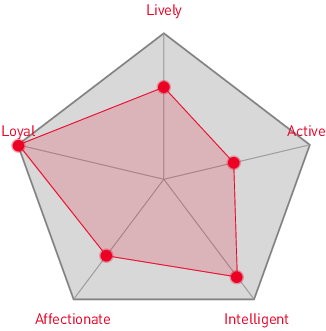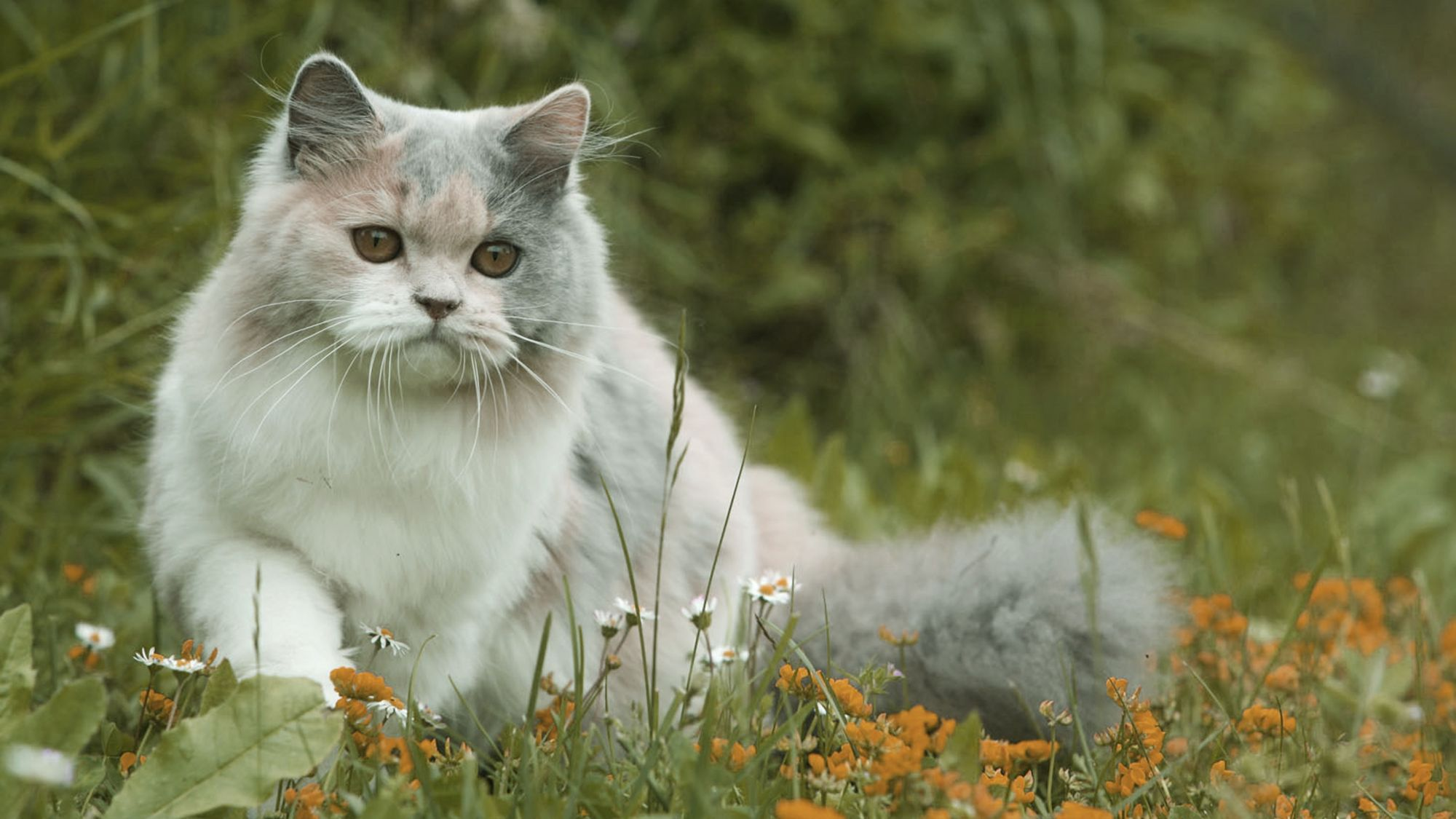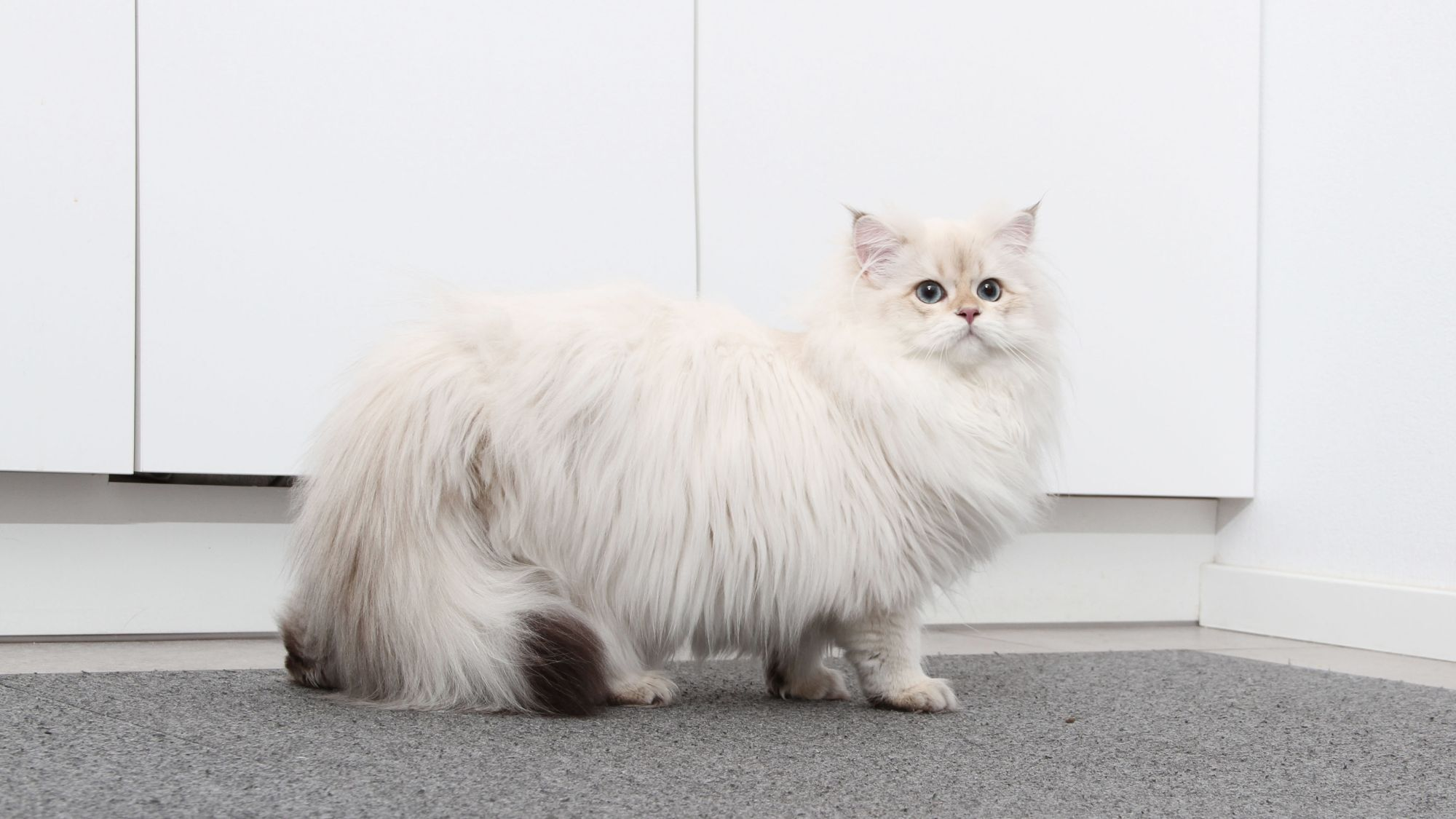
Let's talk British Longhairs
With their round eyes, chubby cheeks, and bounteous coat, the British Longhair leaves a lasting impression. A mix of the British Shorthair and Persian breeds, the British Longhair is unsurprisingly fetching, as well as affectionate. Well-balanced, this is one cat who likes their alone time but will want to occasionally see what you’re up to just the same. They are medium- to large-sized and yes, that coat needs a fair amount of care, but isn’t maintaining their regal appearance worth it?Official name: British Longhair
Other names: British Longhair Variant, British Semi-Longhair, Longhair British, Britannica, Lowlander, Highlander, Highland Straight
Origins: United Kingdom

| Shedding level |  |
Warm weather? |  |
| Energy Level* | Low | *Friendly pet? |  |
| Compatibility with other pets |  |
* We advise against leaving pets alone for long stretches. Companionship can prevent emotional distress and destructive behavior. Speak to your veterinarian for recommendations.
Every pet is different, even within a breed; this snapshot of this breed specifics should be taken as an indication.
For a happy healthy and well-behaved pet, we recommend educating and socializing your pet as well as covering their basic welfare needs (and their social and behavioral needs).
Pets should never be left unsupervised with a child.
Contact your breeder or veterinarian for further advice.


| Baby age | Birth to 4 months |
| Growing kitten age | 4 to 12 months |
| Adult age | 1 to 7 years |
| Mature age | 7 to 12 years |
| Senior age | From 12 years |

1/7
Get to know the British Longhair
All you need to know about the breed
Cat aficionados know the upside of having a marvellous feline like the British Longhair about. Bright-eyed and bushy-tailed, their long tresses and saucer eyes suggest a cat that’s amicable and welcoming.
They are indeed all that, although the British Longhair’s independent side has the breed valuing their alone time - so much so that they often shy away from being picked up and held too much. They are a great choice for working professionals or busy couples who still want cat companionship.
Their profuse coat is only one of the British Longhair‘s winning attributes. Count also their stout legs, curved paws, rounded head, wide triangular ears, and robust body, which can grow to be either medium or large in size.
The British Longhair makes a wonderful family pet, and is a warmhearted breed, especially with children. Make sure to observe them around little kids so no mishandling - on anyone’s part - ensues. Owners take note: The British Longhair likes their mealtime but weight gain can be kept at bay with sufficient activity and the right portions of food. They have a pretty chill nature, and do like to lounge, so ensure your British Longhair stays fit through play with toys and any climbing apparatus, and outdoor time, too. It’s a good idea to watch your cat, however, while outside to ensure they stay safe, just in case any predators are about.

2/7
2 facts about British Longhairs
1. Loud and proud
The British Longhair cat made history in 2011 when a 12-year-old feline named Smokey claimed the Guinness World Record for the loudest purr yet, registering at 67.7 decibels, a sound akin to that of a lawn mower. The champion held his record for four years, only to be outdone by another fierce feline, a touch more out loud at 67.8 decibels.
2. Food, good
The British Longhair breed is known to enjoy their food - very much - so watch your cat’s intake - and don’t give in to those big eyes pleading for more snacks. Treats should be taken from the British Longhair‘s daily meal allotment and kept to a minimum, and free feeding is not recommended. A born athlete they are not, so make sure to keep up their playtime to burn their caloric intake and to keep them as fit as can be.
History of the breed
The British Longhair breed is said to stem from ancient Egyptian and Roman cats, and thought to be one of the first known cat breeds. But it was one of the United Kingdom’s most popular breeds, the British Shorthair, that became the foundation for the modern British Longhair, along with the Persian, the two of whom possessed characteristics breeders desired in a new type of cat: a very docile temperament and long, luscious hair, along with their oh-so-cobby - meaning stocky, short-legged - body. With their breeding, the British Longhair was born.
The exact date of the British Longhair’s beginnings were murky though, said to emanate anywhere from 1914 to 1918 in Britain. In the aftermath of World War II, the breed saw their numbers dwindle, but breeders revived the beloved cat by crossing domestic shorthairs, Persians, and Russian Blues, ensuring their survival.
The British Longhair was granted official championship status by the International Cat Association (TICA) in 1979.

4/7
From head to tail
Physical characteristics of British Longhairs
1. Ears
Distinctive, very large striped ears set high on head, rounded tips.
2. Head
Head is deeper than wide, triangular in shape.
3. Body
Slender, lithe body, strong and very muscular.
4. Tail
Thick, somewhat short tail with characteristic black tip.
5. Coat
Notable cheetah-like spotted coat with short hair.

5/7
Things to look out for
From specific breed traits to a general health overview, here are some interesting facts about your British Longhair

6/7
Caring for your British Longhair
Grooming, training and exercise tips
The lustrous locks of the British Longhair cat will require daily grooming to keep mats and hairballs from forming. Use a wide-toothed comb to do so, which will help rid them of debris, too. Baths are rarely necessary as cats bathe themselves; only take your British Longhair to the tub if they get into something messy. Clean their ears and trim nails routinely; utilise a scratching post to help keep their claws in good condition, and promote healthy scratching (i.e., not the furniture). Brush their teeth often with a vet-approved toothpaste. Playtime is central in exercising your British Longhair whose robust body needs movement to keep fit. The breed likes their downtime so having plenty of toys on hand will help help them maintain a healthy body. Training with treats works like a charm with the British Longhair. They’re very food-motivated so make sure to teach them with kibble taken from their daily meal allotment as a reward for good behaviour. Very early socialisation is important with this breed, who does get along with other cats, dogs, and children, but the earlier the introduction, the better.
7/7
All about British Longhairs
As a very docile breed, the British Longhair likes to take it easy, enjoying their downtime inside and the company of their humans (although they are not always big on being picked up). The external world may prove a challenge, especially when it comes to predators. The breed isn’t hugely agile so while it’s good for any cat to get outside and stretch their legs, make sure to observe your British Longhair cat so they stay safe.
The British Longhair has a very soft side - known for their easy going temperament, and for enjoying the presence of their humans tremendously - but they’re also known for their independence and don’t particularly like being picked up. The British Longhair cat is calm and placid, but staying by your side - especially while receiving strokes - is just fine with them. They’ll let you know when they’re in the mood and when not.
translations.feature.breeds.otherbreeds
Read more on this topic

Should I adopt a cat or buy a kitten?

Should I choose a pure breed or mixed breed cat?

The cost of owning a cat

Your guide to buying a kitten

Your guide to adopting a cat
Sources
1 - Veterinary Centers of America https://vcahospitals.com/
2 - Royal Canin Cat Encyclopaedia. Ed 2010 and 2020
3 - Banfield Pet Hospital https://www.banfield.com/
4 - Royal Canin BHN Product Book

